In my previous instalment, I visited Fornham All Saints, and the home church of my 19th-century ancestors George Nunn and his wife Lucy. I’d even managed to get a glimpse further back into the 18th century, learning the names of their parents and finding the final resting place of a few distant uncles. Now I continue the story, following the rural life of George Nunn and then the trail of his son David Nunn, my great-great granddad.

I left the chilly churchyard and turned left down the road, leaving Fornham All Saints and heading towards nearby Fornham St Genevieve. This is where George Nunn actually lived, in a place apparently called “Clayhall”.
Why did he not attend church in his home village? Well the church of Fornham St Genevieve was destroyed by fire in 1782 and the parish was made a joint one with Fornham All Saints. But from the few records that survive, I had discovered that a couple named John and Mary Nunn had attended this church from the 1750s until the 1770s. Mary and one of their daughters were even buried there.
I had no idea how or if this couple were related to me, but I was keen to visit what was left of the church just on the off chance I could learn something. Most of the building has been pulled down but the tower was left as a feature of the Fornham Park estate, and apparently the headstones have been left in a stack nearby.
The only problem is that the abandoned tower is in the middle of Fornham Park, just north of Fornham St Genevieve, and I had no idea how to reach it. I found a byway that lead that way along the River Lark and decided to give it a go. Soon I spotted my goal…only problem was that I was on the wrong side of the river!
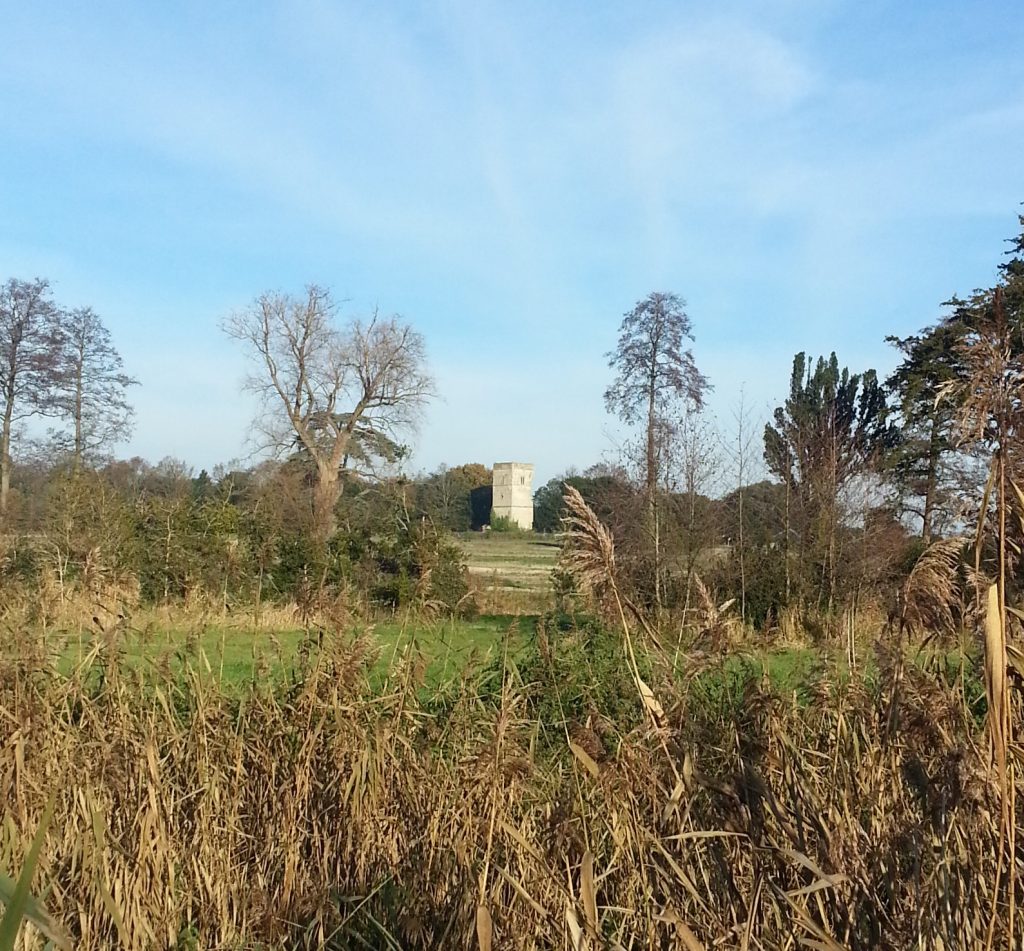
I continued to follow the byway in the hope of finding somewhere to cross, but simply found myself heading further and further past the tower. I was eventually able to cross the river and turn right, but the only way back south was down the road that formed the eastern border of Fornham Park. I finally found the entrance gate, only to be informed by multiple signs that the park was private property and an active work site. I could hear works going on beyond the trees so thought it best not to trespass.
Soon enough I found myself back at my start point, having circumnavigated the park without finding a way in. In a last ditch effort I decided to explore the short fork of road that lead to a nearby water treatment plant and happily discovered another path leading into the trees – this time on the correct side of the river!
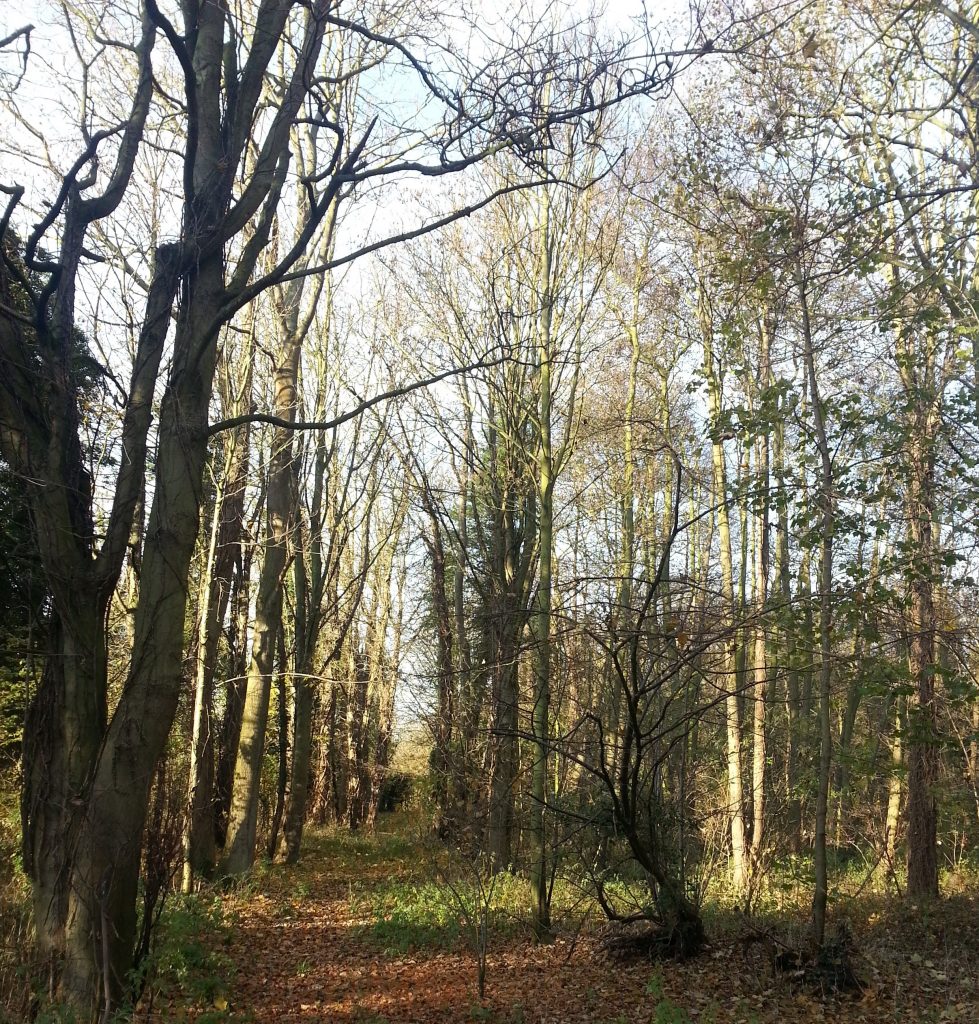
Picking up the plastic sign which had fallen on the ground, I discovered it was an old map of the park which I was now entering. Marked on it, just to the south, was “Clay Hall Cottages”. So I have found another clue after all!
Following the semi-forgotten path into the wintery woods, I soon found another sign that had fallen to the ground. This one detailed how the Fornham Park Estate had been purchased by the Duke of Norfolk in 1788 and the wood that I was currently walking through had been planted in about 1830.
This piqued my interest, because a report in the Bury and Norwich Post from 11 August 1830 states:
On Monday last George Nunn, a labourer on the Duke of Norfolk’s estate, at Fornham, when driving a cart heavily laden with lead, fell, it is supposed in a fit, under the horses’ feet, and received several severe injuries in different parts of the body from being trampled on. Fortunately the wheels did not pass over him, as from the weight of the load he must have been crushed to death upon the spot. He was immediately taken to the Suffolk General Hospital, and is doing well.
So this was where my ancestor worked, a labourer all his life. He would have seen (perhaps even participated in?) the planting of this wood and been there to watch the saplings grow. It certainly is good luck for me that he survived this mishap!
I pushed through the brambles and nettles that encroached on the track, only to run up against a high fence topped with barbed wire that marked the end of the wood. There was no way through and so ended my final attempt to reach the ruined church. I later called the developers to enquire after access permission, but was told with the work going on that it would not be possible. So I will have to hope one day for another opportunity to visit the Nunns of Fornham St Genevieve.
But at least I could now visit the location of Clay Hall Cottages, perhaps the place where George and Lucy Nunn raised their family of nine. Their first born, John, would have increased the brood to ten, but it appears he died young as he is not mentioned in any censuses and they baptised another child John only four years later.
The cottages were set back from the road down a narrow gravel drive. I took a quick photo but didn’t hang around since I didn’t want to alarm the current inhabitants by loitering.
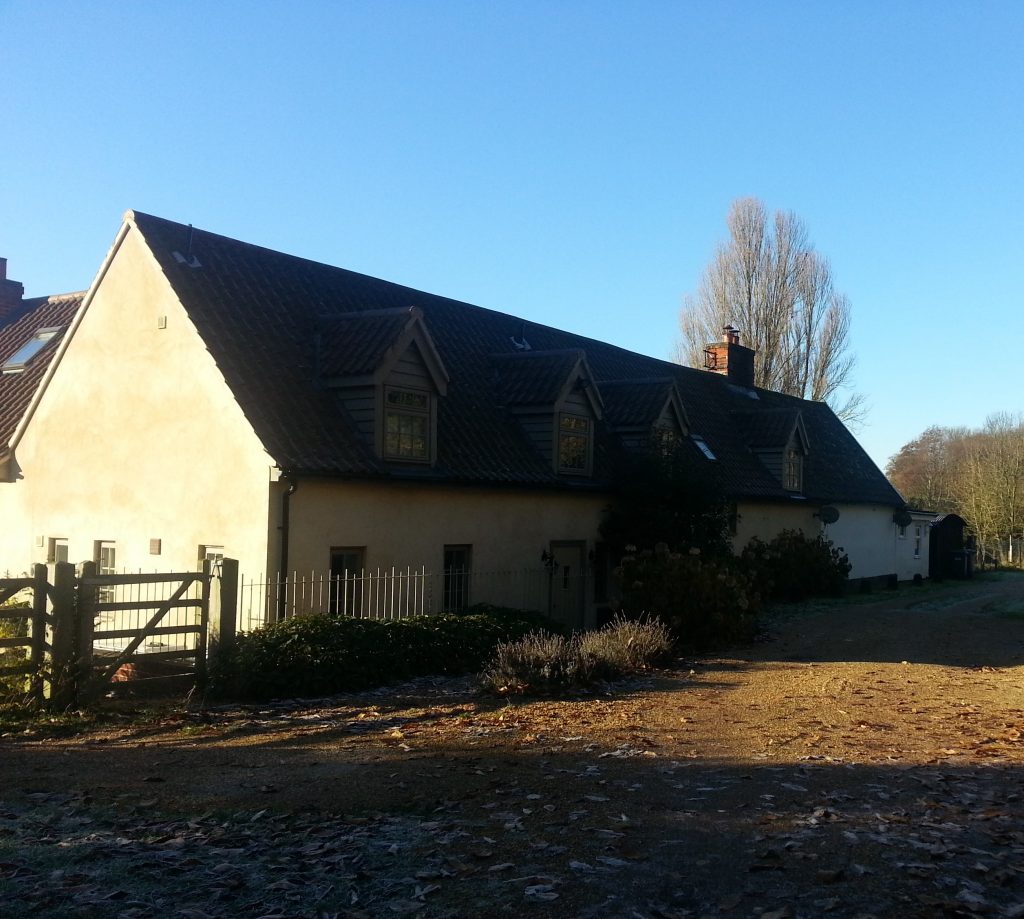
Later records indicate the family moved further down the road again, to Fornham St Martin, so that was my next stop. Catching up with them on the 1861 census, it was no surprise that George and his sons Amos, Ambrose and Charles were all agricultural labourers. But my own great-great grandad, 21-year-old David, had a different profession. It took a long time to figure out what the scrawled 150-year-old word actually was, but I finally managed to translate it as “maltster”, an occupation shared by many of his neighbours.
This is presumably due to the presence of Sir William Gilstrap, a wealthy maltster and philanthropist who bought Fornham Park in 1862. A baronetcy was created for him but as he had no heirs it became extinct on his death in 1896.
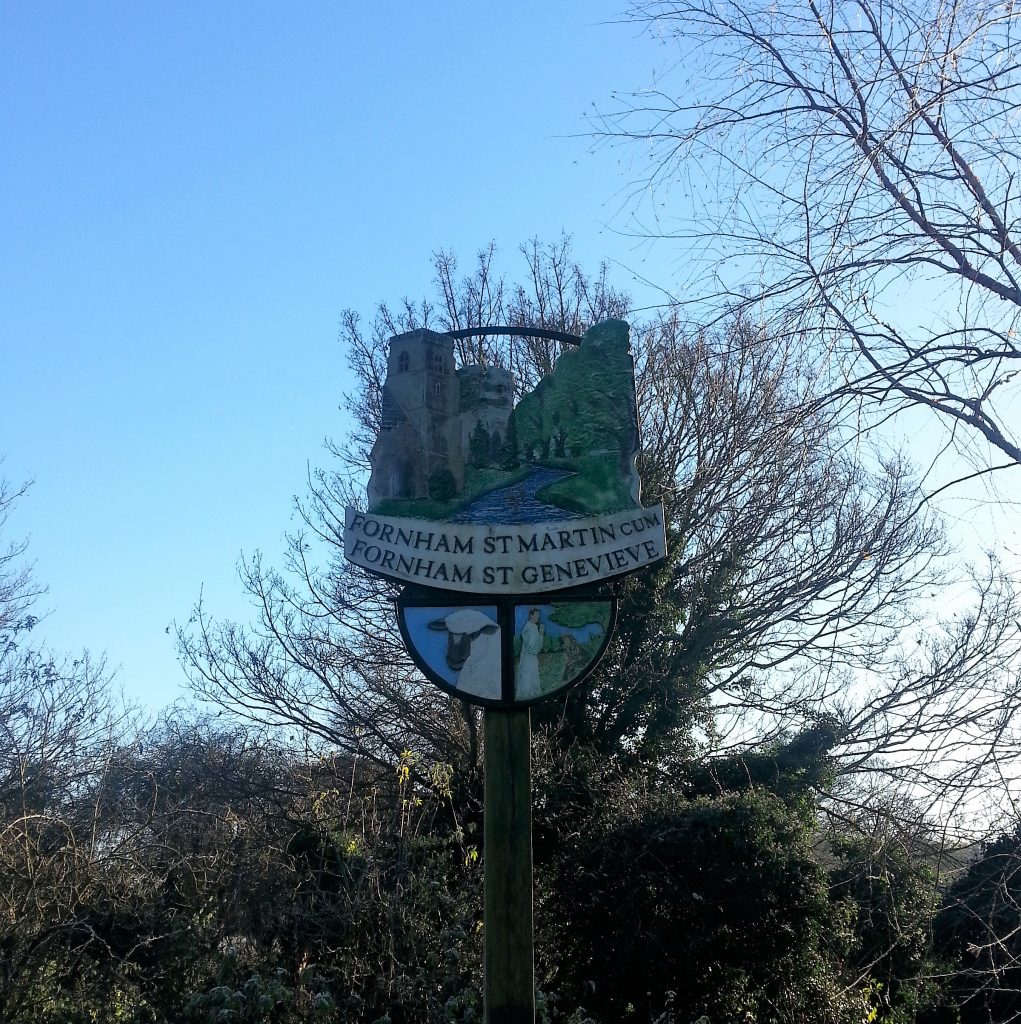
While young David was participating in the local brewing scene, in nearby Bury St Edmunds a 23-year-old woman named Ann Savage was working as a house maid in the house of Henry Thomas Thompson, curate of Fornham St Genevieve cum Westley.
Six months later Ann and David were married in the church of Fornham St Martin, whose grounds I was now entering.
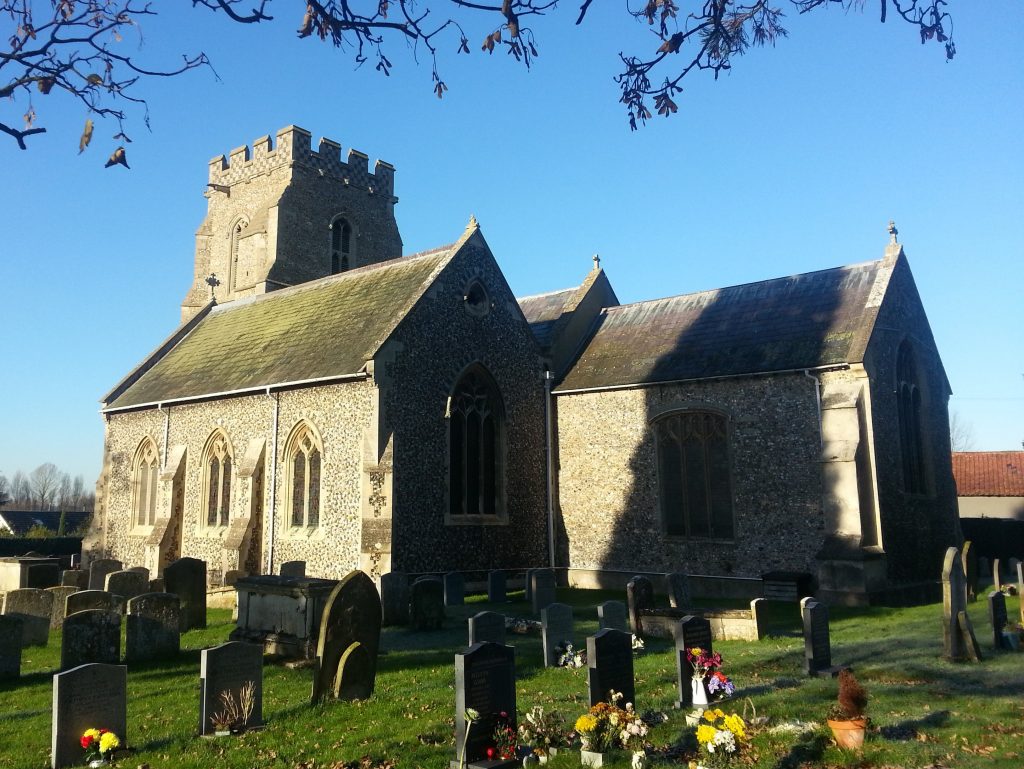
I quickly discovered that the church was locked, but decided to take a look around the church yard just in case I found anything else interesting. I didn’t find any more Nunns, but I did find the headstone of Edward Hogg, the reverend who married my great-great grandparents, and the tomb of the famous Sir William Gilstrap.
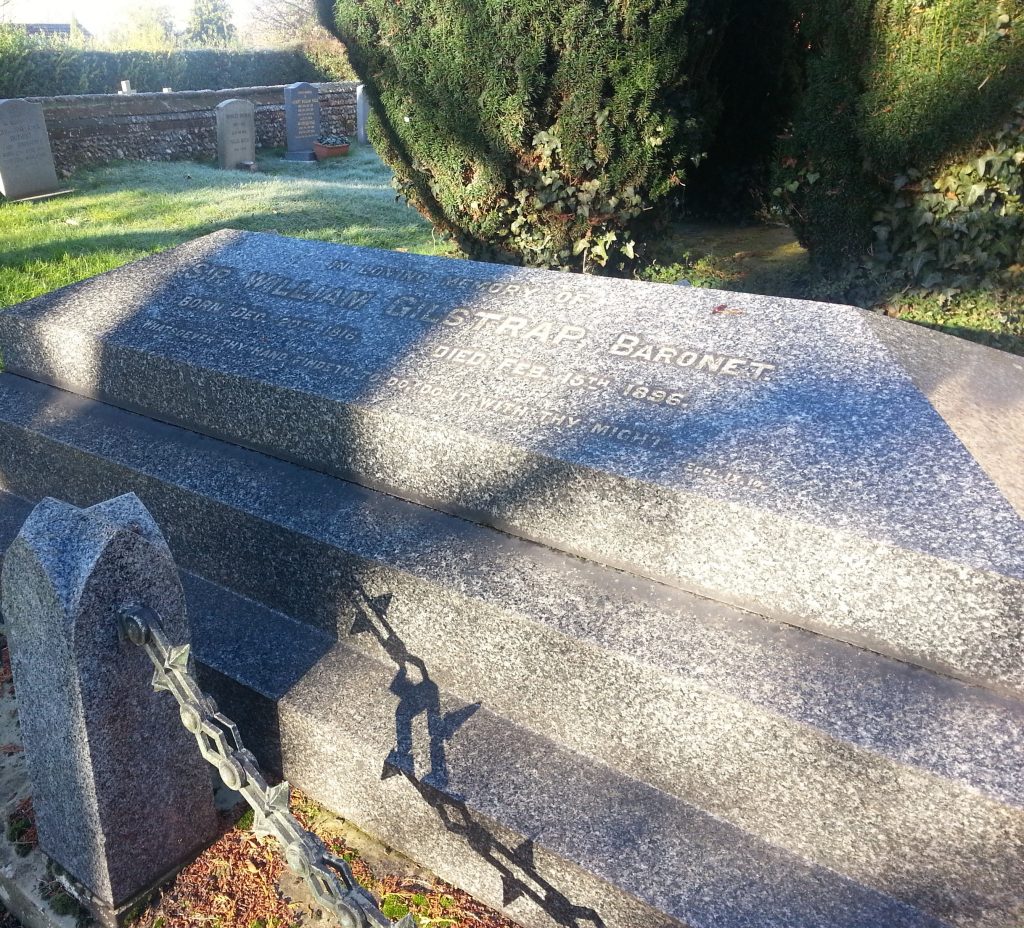
George Nunn passed away in 1874 at the age of 68, and had still been labouring up until his death from bronchitis. He was perhaps lucky that age or injury did not prevent him from working, or he may have had to resort to charity in his declining years like his father-in-law Joseph Emerson. Lucy went on to remarry, although I’ve so far learned little about her second husband William Quantrill or the remainder of her life.
As for David and Ann, they soon left the Fornhams and so must I if I wish to continue their story. That could wait, however, until I’d had a good meal. So I retraced my steps back to Fornham All Saints and entered The Three Kings, a traditional coaching inn which is over two hundred years old and perhaps somewhere my ancestors once gathered at the end of a long day in the fields?

If they had visited this pub in those days, I doubt three-cheese macaroni would have been on the menu! Nevertheless it was delicious and gave me the energy to move on to the next stop of my quick visit to Suffolk – something you will be able to read about soon!
References:
UK census records, sourced freely from freecen.org.uk where possible
St Genevieve, Fornham St Genevieve by Simon Knott
History of Fornham Park and Estate in Fornham St Genevieve by David Addy
The British Malting Industry Since 1830 By Christine Clark


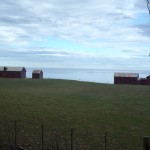

I live in Clayhall Cottages, Fornham St Genevieve and I’d be very interested to hear any more information you have relating to them or ‘Clayhall’
I’ve always imagined there was once a Clay Hall ?
I know there was a third cottage down the track, until the 1970’s I think when it was taken down